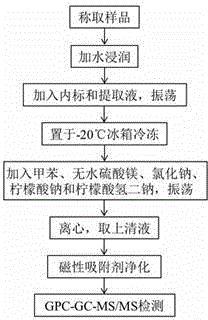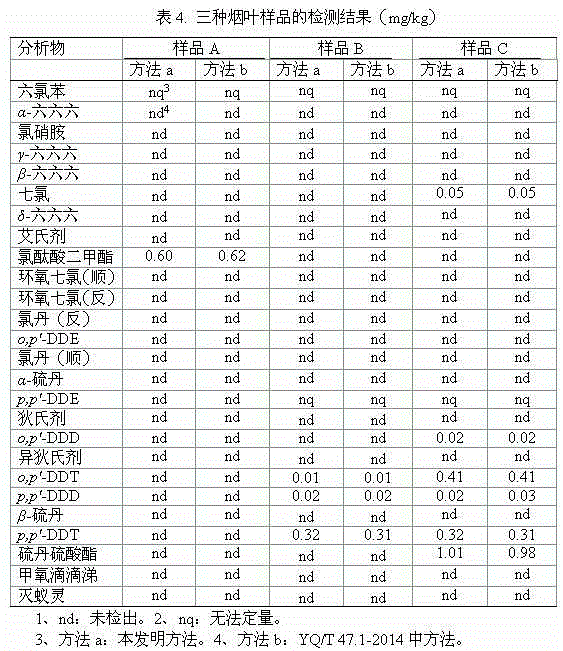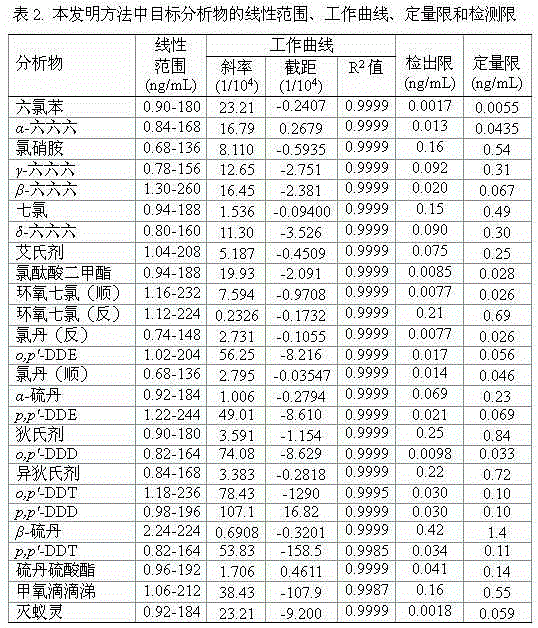Method for determining organochlorine pesticide residues in tobaccos or tobacco products
A technology for pesticide residues and tobacco products, which is applied in the field of determination of organochlorine pesticide residues in tobacco and tobacco products, can solve the problems of rapid analysis of unfavorable samples, high price of purification materials, and prolonged analysis time, so as to reduce test costs, Overcome the tedious and time-consuming effect of simple operation
- Summary
- Abstract
- Description
- Claims
- Application Information
AI Technical Summary
Problems solved by technology
Method used
Image
Examples
Embodiment 1
[0027] A method for the determination of organochlorine pesticide residues in tobacco and tobacco products:
[0028] 1) Prepare an internal standard solution: use triphenyl phosphate as the internal standard and toluene as the solvent to prepare an internal standard solution with a concentration of 20 μg / mL;
[0029] 2) Prepare matrix-matched series standard working solutions: Prepare matrix-matched series standard working solutions with concentration gradients and internal standards, as follows:
[0030] Using a variety of organochlorine pesticide standard products (that is, the twenty-six organochlorine pesticide standard products in Table 1) as the solute, toluene as the solvent, and triphenyl phosphate as the internal standard, prepare a series of standard working solutions with different concentrations: 0.001, 0.002, 0.005, 0.010, 0.020, 0.050, 0.100, 0.200 μg / mL, and the internal standard concentration in the series of standard working solutions is 0.200 μg / mL; take a bl...
PUM
 Login to View More
Login to View More Abstract
Description
Claims
Application Information
 Login to View More
Login to View More - R&D
- Intellectual Property
- Life Sciences
- Materials
- Tech Scout
- Unparalleled Data Quality
- Higher Quality Content
- 60% Fewer Hallucinations
Browse by: Latest US Patents, China's latest patents, Technical Efficacy Thesaurus, Application Domain, Technology Topic, Popular Technical Reports.
© 2025 PatSnap. All rights reserved.Legal|Privacy policy|Modern Slavery Act Transparency Statement|Sitemap|About US| Contact US: help@patsnap.com



